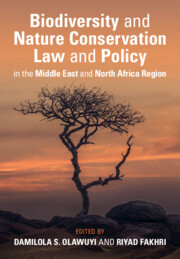The triple planetary crisis – climate change, biodiversity loss, and pollution – is threatening the survival and well-being of millions of people across the world and future generations. In the Middle East and North Africa (MENA) region the crises are compounded by increasing environmental threats, such as water scarcity, rising temperatures, land degradation, the overexploitation of fauna and flora, habitat destruction, oil-related pollution, and weak resource management frameworks.
Among the environmental challenges faced by the region, biodiversity loss emerges as a critical concern. The region safeguards a diverse and valuable biological, natural, and cultural heritage, which is essential for the economic, social, and cultural well-being of its growing population. However, escalating environmental threats are exacerbating ongoing biodiversity loss both within the region and beyond. In this context, the recent international agreement adopted under the United Nations Convention on the Law of the Sea on the conservation and sustainable use of marine biological diversity of areas beyond national jurisdiction (the BBNJ Agreement) is a landmark agreement to prevent biodiversity loss. This follows the adoption of the Kunming-Montreal Global Biodiversity Framework (GBF) in December 2022 – a call for global action to protect nature through to 2030 and beyond. It is now imperative for countries to take the necessary actions to support the BBNJ Agreement’s ratification and implementation and meet the GBF’s twenty-three targets for 2030 and four goals for 2050.
In this era defined by unprecedented environmental challenges, it is essential to understand the legal and policy frameworks that underpin the region’s conservation efforts. This book, Biodiversity and Nature Conservation Law and Policy in the Middle East and North Africa Region, sheds light on the latest legal landscapes that shape the future of our invaluable biological, natural, and cultural heritage. It is the culmination of a combined effort from legal academics and professionals to raise awareness, inform, and provide reflections on how MENA countries can advance strategies, policies, and legislation in a region rich in biological diversity.
This book, the second book project by the Association of Environmental Law Lecturers in Middle East and North African Universities, delves further into the dynamics of environmental law and policy in the MENA region, building on the foundation established in its previous work, Climate Change Law and Policy in the Middle East and North Africa Region. Recognizing the ongoing need to build capacity in the region to develop clear and comprehensive legal and institutional frameworks that coherently address existing and emerging environmental threats, this book seeks to support MENA countries by fostering an exchange of information and best practices, with a specific focus on biodiversity and nature conservation law and policy.
The United Nations Environment Programme is dedicated to continuing its support for MENA countries in enhancing their capacity to tackle environmental challenges, including from a legal and institutional perspective. This commitment is especially crucial as biodiversity concerns gain prominence on countries’ agendas.

